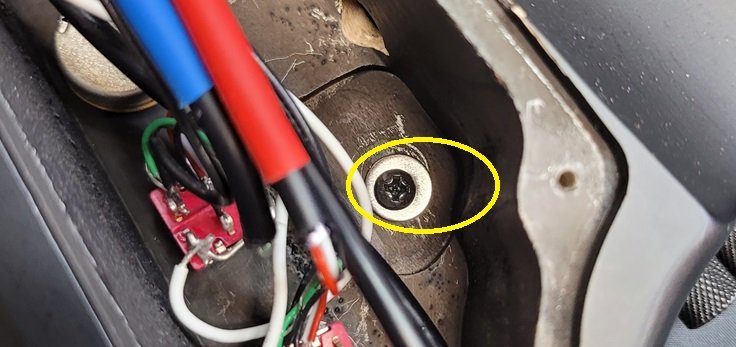Internal GK-5 Install (part 1)
DISCLAIMER: I am not a woodworker, machinist, luthier, etc.
I am just someone with a vision and determination.
Anyone can do any of this far better than I can.
That means you.
Guitar-synthesizer interfaces have been around for over four decades, and despite their seemingly narrow appeal and adoption, they have continued to improve and innovate. I have owned and used many different instruments, controllers, software, and systems that all seem to do a decent (but never truly great) job at interfacing a guitar with MIDI, so I’m always looking for the next best thing in that space.
When I learned of the latest release from Roland in the GK series, I got one and mounted it to one of my Steinberger Synapse ST-2FPA ‘Transcale’ baritones. Preliminary setup and testing showed it worked a bit differently than the old GK-2 and GK-3 in that there’s an onboard ADC (analog-to-digital converter), so it sends a serialized data stream through a shielded, twisted pair cable instead of the 13-conductor analog system used by the prior generations.
Performance-wise, it seemed at least on-par with the older generations, but really set itself apart with the flexibility afforded by the software control over the raw audio coming in through the now digital hexaphonic pickup system. The GM-800 host synth system can manipulate and interpret the streaming data in ways the older generation cannot. In the past, I had to re-pin the miniature connector for the hex pickup so that I could install it in a ‘reverse’ configuration in order to reduce the noticeable (to my picking-hand) footprint of the pickup. With the GK-5 and GM-800, it’s a toggle in the software—no more picking at tiny locking tabs with a needle to swap 32 ga. wires! Also, I was able to optimize the system by specifying my exact tuning-- B-E-A-D-F#-B in this case. The lower notes are still subject to the laws of physics i.e. if a cycle takes longer to repeat and be identified, it takes longer for the system to generate the MIDI event that corresponds with note-on/note-off, etc., so no miracles there.
Once satisfied with the mounting of the pickup (I always rigidly mount them; no springs as they tend to make the pickup move and deflect as you play), I ran one of the provided bolts through an unused switch hole on the face of the guitar and temporarily attached the ¼ TRS interface/ADC piece until I could think of a better place to mount it on a guitar with very little in the way of a body.
I took a few days to ponder and decided that since the interface part of the GK-5 is much slimmer and smaller than the older GK-series, an internal installation would be easier than ever. Also, having removed the 9-volt battery stuff from the Synapse (I never liked the active pickups or the impossible-to-properly-intonate piezo bridge) gave me what seemed to be a perfect little compartment for the GK-5 interface. As for the additional ¼” jack, I wasn’t sure what to do at that time. But then I considered all the space behind the existing input jack and began to get ideas.
I needed to figure out just how much smaller the GK-5 guts would be if I got them out of their plastic case, so I removed my temporary mounting screw.
Once I got the fob free, I started disassembly. First, the only visible screw:
Then I had to pry it apart…
To reveal the actual inner workings:
And then to remove the PCB from the bottom half of the shell, the two obvious screws on either side of the TRS jack needed to go, and that freed the PCB from the shell.
To get the board completely free, I *VERY carefully* unplugged the miniature connector for the pickup (it’s identical to the ones used in prior generations), and then faced one last screw which secured the cable to the strain-relief in the bottom half of the housing shell.
With everything free, it was time to take some measurements. Here’s what I found:
the cable from the pickup to the board is about 11 inches (280mm)
the board is about 2 9/16” inches (66mm) long
the board is about 1 1/4” inches (32mm) wide
the connector for the hex pickup is about 7/16” x 1/8” x 11/32” (11mm x 3mm x 8mm) when you give some leeway for the very delicate wires and you plan to fish it through a tunnel/hole
I decided to see how it might fit inside the guitar. The former battery compartment seemed a decent fit for sure. Plenty of space:
But the pickup lead would need to do a lot of twisting and traversing to reach back there from the front. How about the control cavity? It used to have all of the active electronics inside on their own PCB, so with that gone, there should be plenty of extra room…
Not a bad location at all. It’s directly under the end of the hex pickup too, so maybe just a small hole through the front of the body for that miniature connector to pass through? I have other plans for the non-GK aspects of this instrument, so maybe a different kind of opportunity will appear as I tackle that.
We’ll see what happens in part 2


















